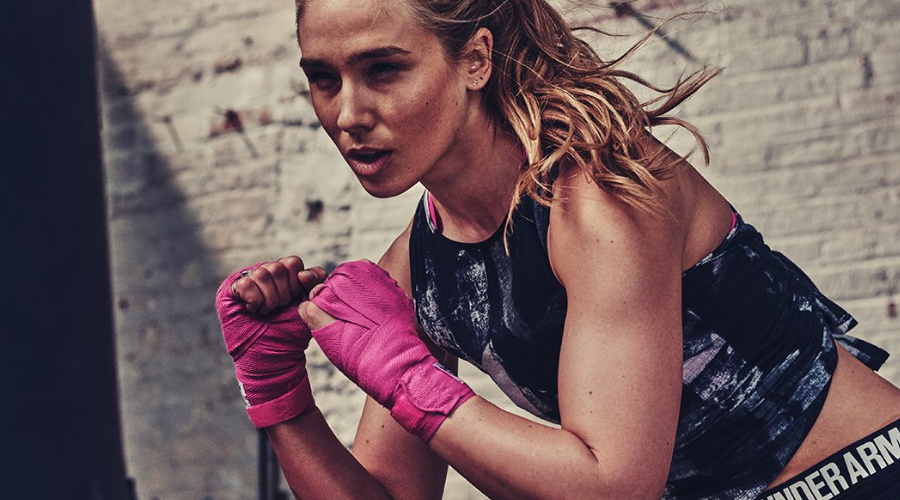Under Armour Inc. is the latest company to see the industry’s inventory levels improving faster than expected with the wrap-up of liquidation sales at Sports Authority. The healthier inventory state bodes well for an industry pickup in the back half of the year should weather cooperate.
“From what we can understand, as of the end of the August, most of the domestic retail partners are in really good inventory positions,” said Chip Molloy, Under Armour’s CFO, Wednesday at Goldman Sachs’ retail conference.
Molloy said the inventory glut came not only from the going-out-of-business sales at Sports Authority but “some other smaller bankruptcies,” which included the liquidation of Sport Chalet. Excess inventories across retail also followed a mild winter in many parts of the country. He inferred the marketplace has become less promotional, although stores continue to stock up conservatively.
“They are cautious – our partners – going into the fall/winter season and understandably so,” said Molloy. “And so they’ve taken a position of caution from a taking on of inventory. But we all believe that, if the season turns out to be better than expected, that we’re in a position to fulfill that need.”
Molloy also said that at least domestically, the sporting goods channel “needed to have some shrinkage” in square footage. And with part of their challenges due to growth in e-commerce, he believes Under Armour is well positioned for the shift.
“We’re in a position to capture those sales wherever she or he wants to shop, whether it’s through one of our wholesale partners, whether it’s in one of our own stores, or whether it’s on our own e-commerce site, or whether it’s on our partners’ e-commerce sites,” he said.
Demand-wise, Molloy said interest in “athleisure, or athletic, or sporting wear is healthy. I think it’s growing.”
At Under Armour, the largest “white space” growth opportunity is within its current points of distribution with women’s. “We’ve done a nice job in women’s but we know we can do better,” said Molloy. ”We’ve invested in a great team in the last 18 months, have really put together a great line of product that’s starting to hit the stores. You’ll see more of it in the spring and summer. It’s been well received by our wholesale partners, and we’re excited about that, and that’s a place to get better.”
The biggest difference versus past women’s collections is “breadth and depth,” including more SKUs, broader price points and better segmentation efforts around good, better and best. It also includes women’s-specific footwear.
“We’re going to continue to earn more space in our current points of distribution by becoming a better female brand,” said Molloy.
Another internal opportunity is youth, particularly reaching girls, with the brand being relevant for boys for a long time. The girls category is expected to benefit from the brand’s exposure as sponsor of the U.S. gymnastics team.
“We don’t sell leotards but it’s really exciting to see the gymnastics team and what they’ve brought to Under Armour during the Olympics and what that means for our female youth customers,” said Molloy. “Really helps create a brand heat behind that.”
Footwear remains a “tremendous opportunity” for Under Armour, both in basketball and running. The popularity of Stephen Curry is driving “more and more demand” in the basketball category. Running, which Under Armour has been involved with for seven years, is a category where Under Armour is “earning more space slowly.”
“Running is a place that takes a lot,” said Molloy. “You’ve got to go to market differently. We know that. You’ve got to go to market with really credible product, with really credible price points, with some look and feel.”
Part of the focus in running is expanding its price range. Last year, Under Armour had four SKUs in running over $100. This year it has eight, and next year it will have 14 for spring. Said Molloy, “By doing that, you’re also making the space more productive for our partners, and they want more of that product.”
Long term, Molloy said Under Armour’s opportunity is on lifestyle, marked by the launch of its UAS collection. He added, “That’s not going to be this year or next year, but it’s a tremendous opportunity to channel new product through our current points of distribution that are both accretive in sales and accretive in margin.”
Asked about expectations for the back half of the year, Molloy noted that the company had already pulled back growth targets, with Sports Authority’s exit taking out 300 to 400 basis points of growth. Following growth of 30 percent in the first quarter and 20 percent in the second, Under Armour expects another 20 percent of growth in the third quarter and 24 percent overall for the full year.
Molloy feels encouraged that with cleaner overall inventories in the marketplace, there may be a surprise to come on the upside. “Everyone is in a good position to take advantage if the season does turn out to be a little bit better,” he said.
Photo courtesy Under Armour
















